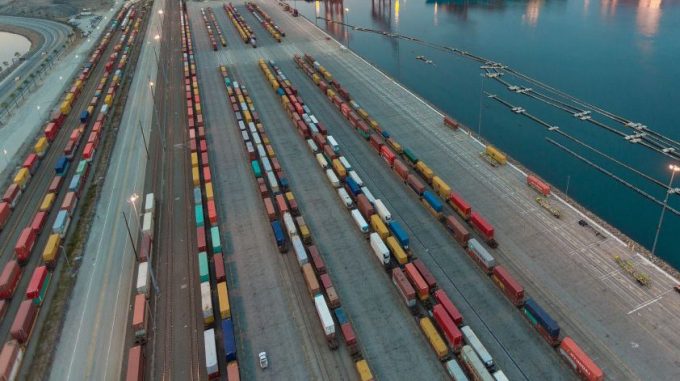LA and Long Beach set to levy fee per teu for cleaner trucks fund
California’s two major ports in the San Pedro Bay region is to levy a $10/teu ...

The ports of Los Angeles and Long Beach are moving to beef up their rail capabilities, with US imports expected to surge in the coming months.
The ability to move containers rapidly off the docks is seen as vital to cope with high traffic volumes and ...
Comment on this article